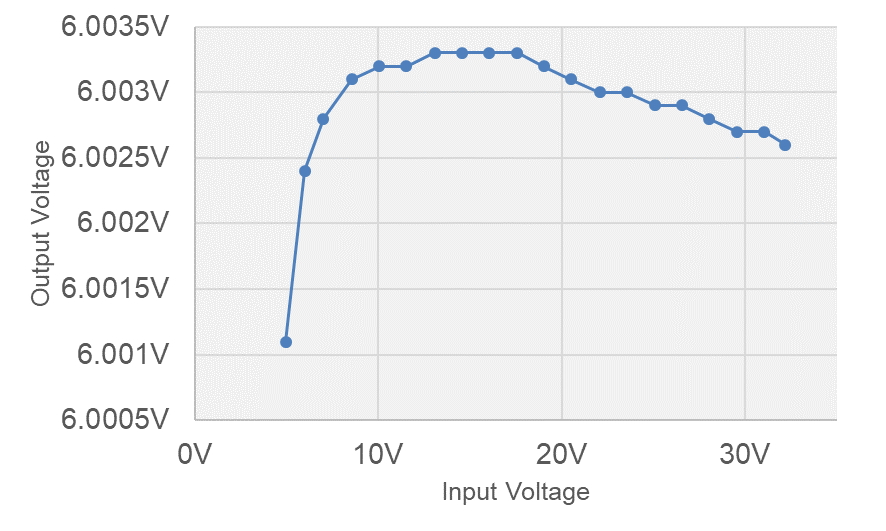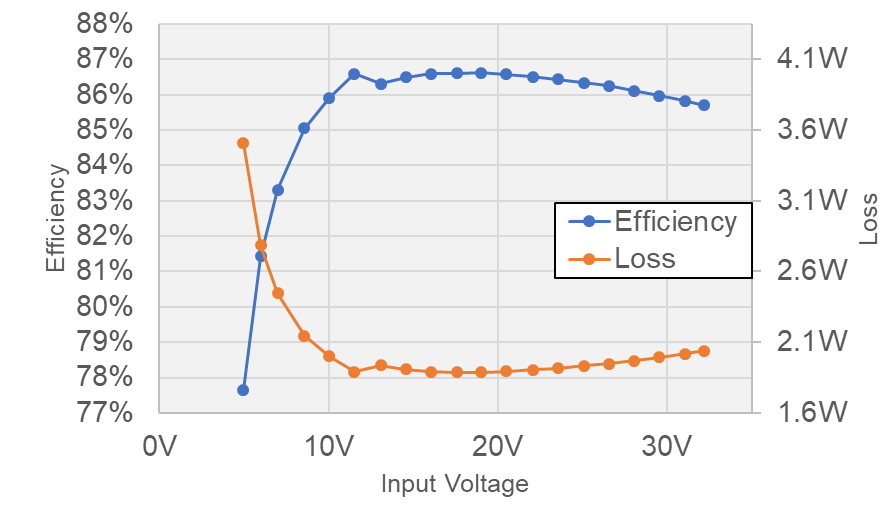TIDT316 December 2022
- Description
- Features
- Applications
- 1Test Prerequisites
- 2Testing and Results
- 3Waveforms
- A Output Ripple Reduction, Output Current Capability, and Dithering Option
2.4 Line Regulation
 Figure 2-4 Output Voltage vs Input
Voltage of Power-Stage
Figure 2-4 Output Voltage vs Input
Voltage of Power-StageThe measurement for line regulation data was gathered for efficiency and loss.
 Figure 2-5 Efficiency and Loss vs Input
Voltage of Power-Stage
Figure 2-5 Efficiency and Loss vs Input
Voltage of Power-StageThe irregularity in the curves at 11.5-V to 13-V input voltage is related to the measurement range change from the input current.